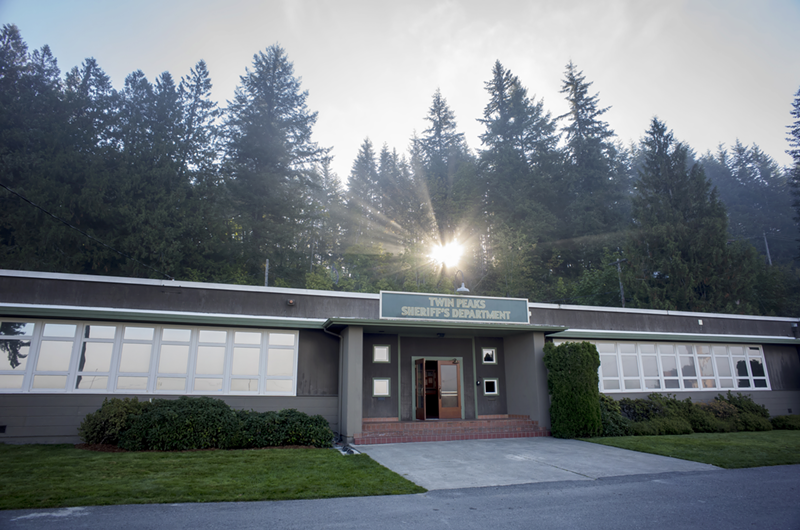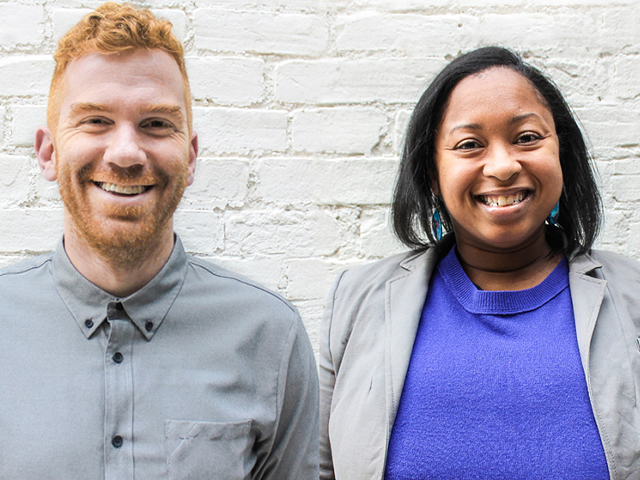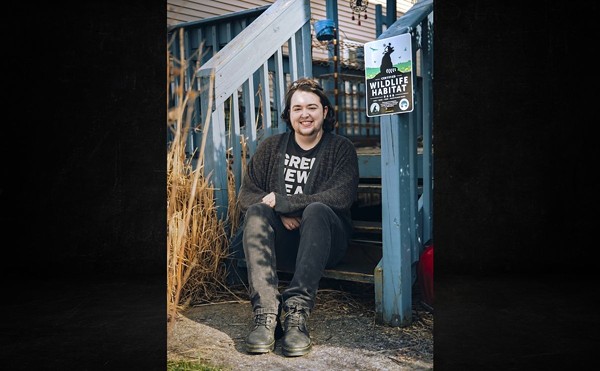Twin Peaks does not rely on gimmicks or "remember me?" sentiments, but rather is a crossroads between the past and present. After a 26-year gap, co-creators David Lynch and Mark Frost have resurrected their cherry pie-encrusted "whodunit" mystery into a new being altogether; within the crust is a healthy dose of Lynchian absurdism and a pang of nostalgia.
Twin Peaks, set in a sleepy Pacific Northwest town, originally aired in 1990-91. Its revival doesn’t rely on the old, but instead builds flourishing, surreal imagery and concepts on top of what once was. In the last episode of the original series’ second season, Laura Palmer — or, rather, her dreamscape incarnation — told Agent Cooper they would meet again after 25 years. And it was this scene that opened the newest installment to the series, which aired May 21 on Showtime and continues on Sunday nights.
In fact, the majority of the two-hour event strayed from the campy, small-town nature of the first Twin Peaks. Depicting multiple gruesome murder scenes, Lynch and Frost take the viewer to South Dakota, New York and Las Vegas. It’s apparent in the carnage that the resurrected Twin Peaks won’t shy away from revealing the underbelly of humanity. With scenes of a bloated corpse and a severed head, and multiple acts of violence against women, the new installment is more uncomfortable than its predecessor. However, bits of the series’ Pacific Northwest town leak into whatever setting the characters find themselves in.
It’s clear that Lynch was given more creative license this time around. The most notable loss is the original Twin Peaks’ undercurrent of clean-cut, tongue-in-cheek attitude, like Deputy Gordon Cole (played by Lynch himself) yelling that Shelly is the “kind of girl that makes you wish you spoke a little French.” Layered in the mundane, even when dark or sultry moments were revealed, there was always a level of refrain then — Frost grounded Lynch. This time, backed by the more unregulated Showtime, Frost is an undercurrent to Lynch’s surrealistic style.
Little moments still shine through. It’s in the familiar squeaky voice of receptionist Lucy asking a patron repeatedly what Truman they were looking for, in Deputy Hawk when he says he’ll need donuts to get him through the night or in Shelly when she comments that James is still cool while dreamy Shoegaze wafts in the background.
In moments, Frost’s simplistic and suspenseful style rears its head, grounding the narrative in a sense of hyperreality. Oozing between intricate and wild flavors, Twin Peaks couldn’t exist without either. It’s the blend of absurdity from Lynch and cozy hyperreality from Frost that creates an aesthetic that television has been reaching for since the Black Lodge’s red curtains last rippled in our collective nightmares.
Lynch has only delved deeper into the dark and uncomfortable as he’s progressed as an artist. Similar to the feeling of 2001: A Space Odyssey, scenes are drawn out. They linger. A mystery man stares at a clear box. Something is supposed to appear, but all the viewer experiences is unfathomable stillness. Sitting on a loveseat, the viewer is as restless as the on-screen subject and the soundscape is void of anything but static.
The new episode felt like a dive into the subconscious speckled with familiar faces. The Log Lady whispered wide-eyed into a phone receiver, warning Deputy Hawk that something was missing.
In Twin Peaks, something's always missing. It’s the viewer grasping for full understanding that brings beauty to the fact that there is none. Though grimier and often a shock to the system, the world of Twin Peaks exists to confuse; it wants viewers to sludge through the banks of their own absurdity. Like Coop’s coffee — black as midnight on a moonless night — the return of this beloved series has taken a darker turn. But in this strange darkness are slants of light.
As the Log Lady said, something is missing. And perhaps that’s the point of it all.
TWIN PEAKS airs 9 p.m. Sundays on Showtime.







